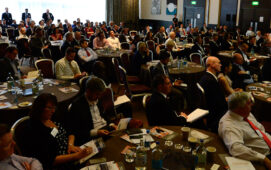Las Vegas is the destination this week for many Tibco users attending its annual Tucon event. The highlight for many might well be a show by 90s rockers Train at the big party on Wednesday night. But for all of us in the low-latency world, the focus will be on Tuesday’s keynote, when benchmarks for the recently released version 1.1 of FTL messaging will be announced. And here’s a little preview …
The bottom line is that compared to its 1.0 release, the 1.1 offering provides a big latency reduction for both intra-server and inter-server communications.
For intra-server, latency is reduced from 384 nanoseconds to 318. For inter-server using InfiniBand and RDMA, it’s down from 3.1 microseconds to 2.2. Both those numbers relate to marketing-friendly 16 byte payloads.
But for more realistic financial markets payloads, the numbers are still pretty good. For example, benchmarking 128 byte payloads, intra-server messaging is 354 nanoseconds, while InfiniBand RDMA is 3.4 microseconds, and 10gE RDMA is 4.14 microseconds.
For its 1.1 benchmarks, Tibco used a dual socket HP DL 380 server, with Intel Xeon 5687 chips, clocked at 3.6GHz. That compares to the 1.0 benchmarks run on a dual-socket Dell C6100 server, with Xeon 5670 chips running at 2.93 GHz.
But according to Tibco’s senior product architect for messaging Bill McLane, the server platfom had little impact on the improved performance. The work done by Tibco itself, particularly on optimising the code paths of the messaging APIs and on network transports, led to most of the latency improvement.
Also new in 1.1 is a graphical interface for FTL’s Realm server, used to design and administer an entire FTL environment.
At Tucon, Tibco will also provide some details of FTL 2.0, which will focus on improved performance and better administration tools to accelerate real life deployments. It is slated for release before year end.
Tibco execs aren’t yet naming any customers for FTL, though a case study at Tucon featuring the Chicago Mercantile Exchange and Intel gives one pointer in that respect.
Subscribe to our newsletter




